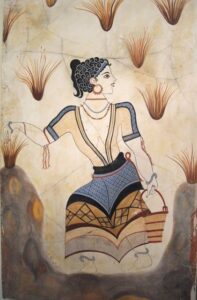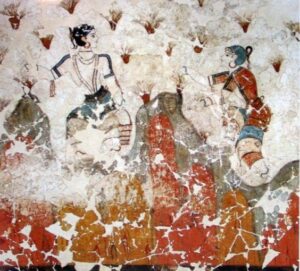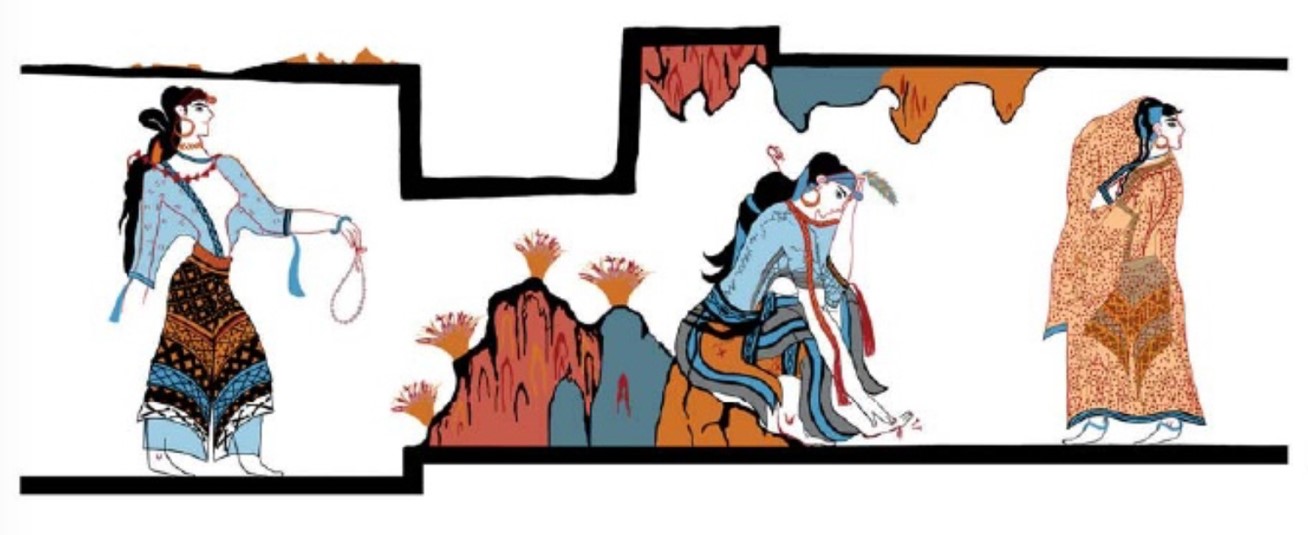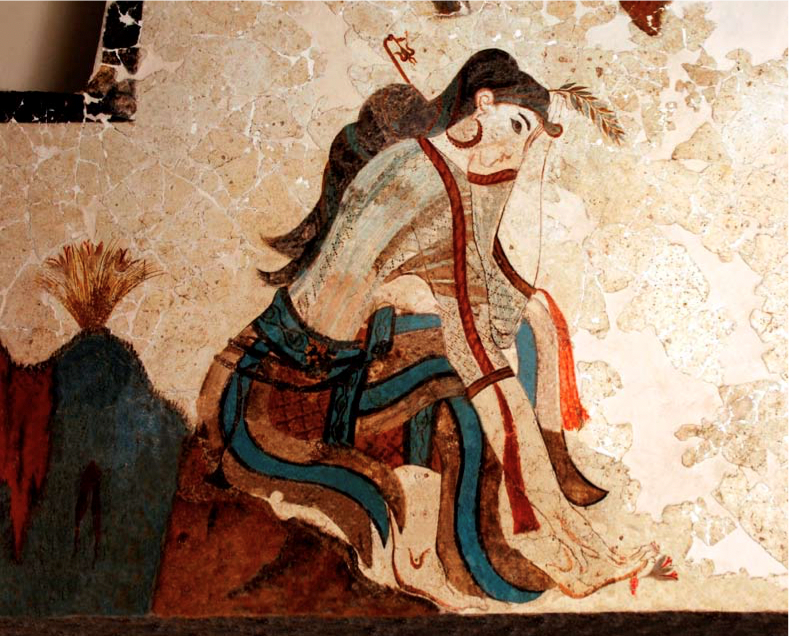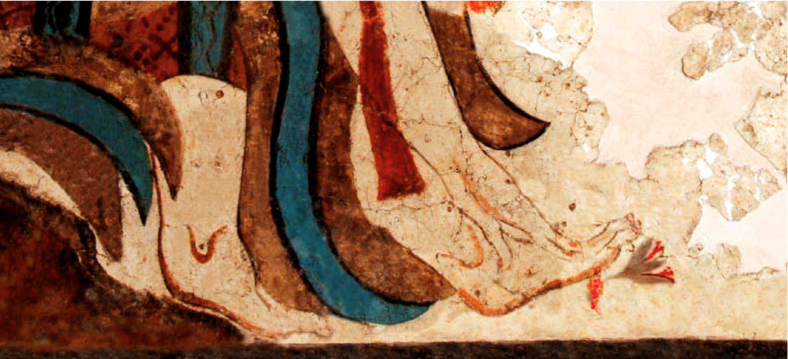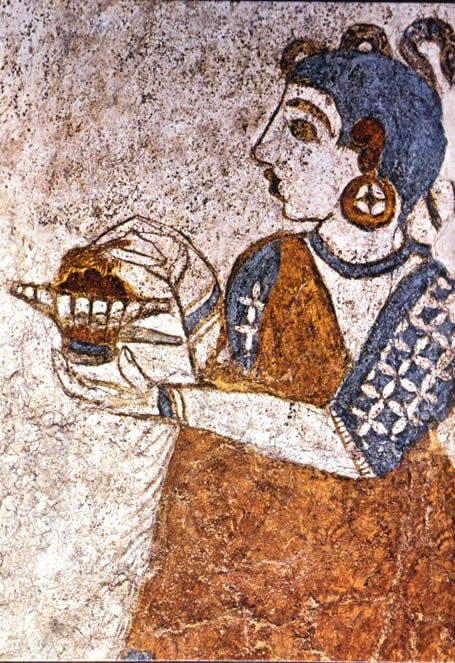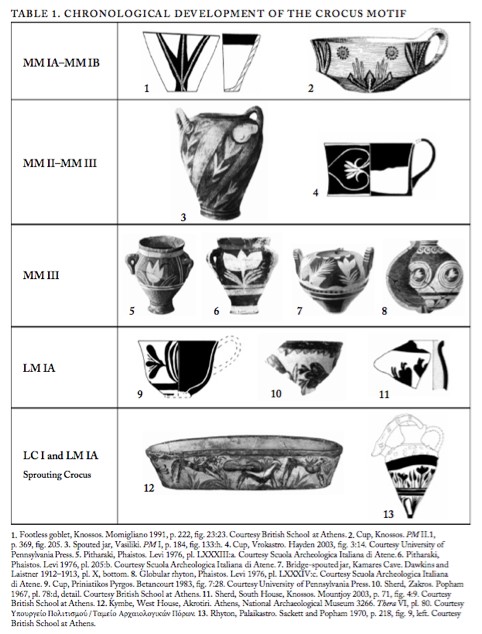Geschiedenis van Saffraan

The story of the miracle spice over the last 4000 years. Crocus sativus as the engine of an econom.
Part 1 The birth of the Saffron trade in the Meditteranean
The history of Saffron goes back many thousands of years. In caves in what is now Iraq archeologists discovered that cave dwellers have used the powerful orange colour of the Saffron stigma as component of their paint.
The first images of Crocus sativus Saffron flowers we know of have been found on earthenware pots in Minoan palaces. The oldest, well-known image can be seen on a pot that was made around 2000 – 1800 BC, so 3800 to 4000 years ago.
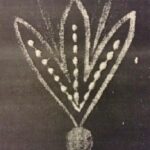
Frescoes in the Minoan palaces of Knossos on the island of Crete and Akrotiri on the island of Santorini North of Crete date from around 1650 BC. We see a goddess who is offered a sacrifice of the new harvest. Several women are harvesting Saffron on other mural paintings. Another woman uses Saffron to color her lips, possibly in preparation for a religious ritual.

A reconstruction drawing of a room in the complex of Akrotiri, where several walls had frescoes with Saffron flowers and plants on them, as shown in the following pictures.
The goddess in this scene oversees the harvesting of the Saffron. This fresco makes clear how important Saffron was to the Minoan civilization.

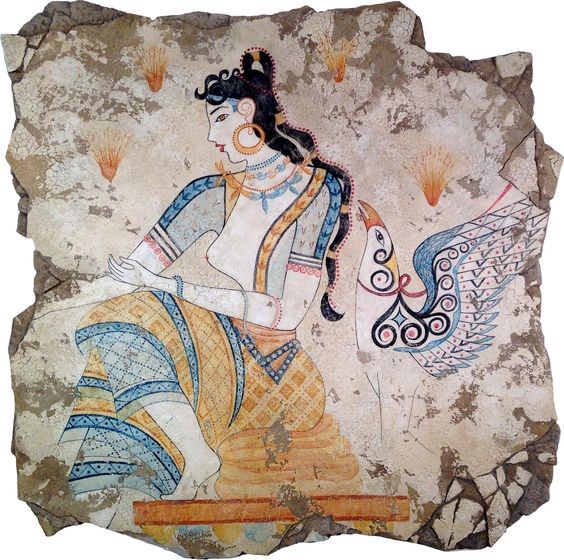
A female Saffron plucker empties a basket of freshly picked Saffron flowers. A blue monkey, representing a mythological animal, offers fresh Saffron to the goddess.


The following scene, called “The Saffron Harvesters”, once again demonstrates the importance of Saffron on the island of Santorini to the north of Crete.

